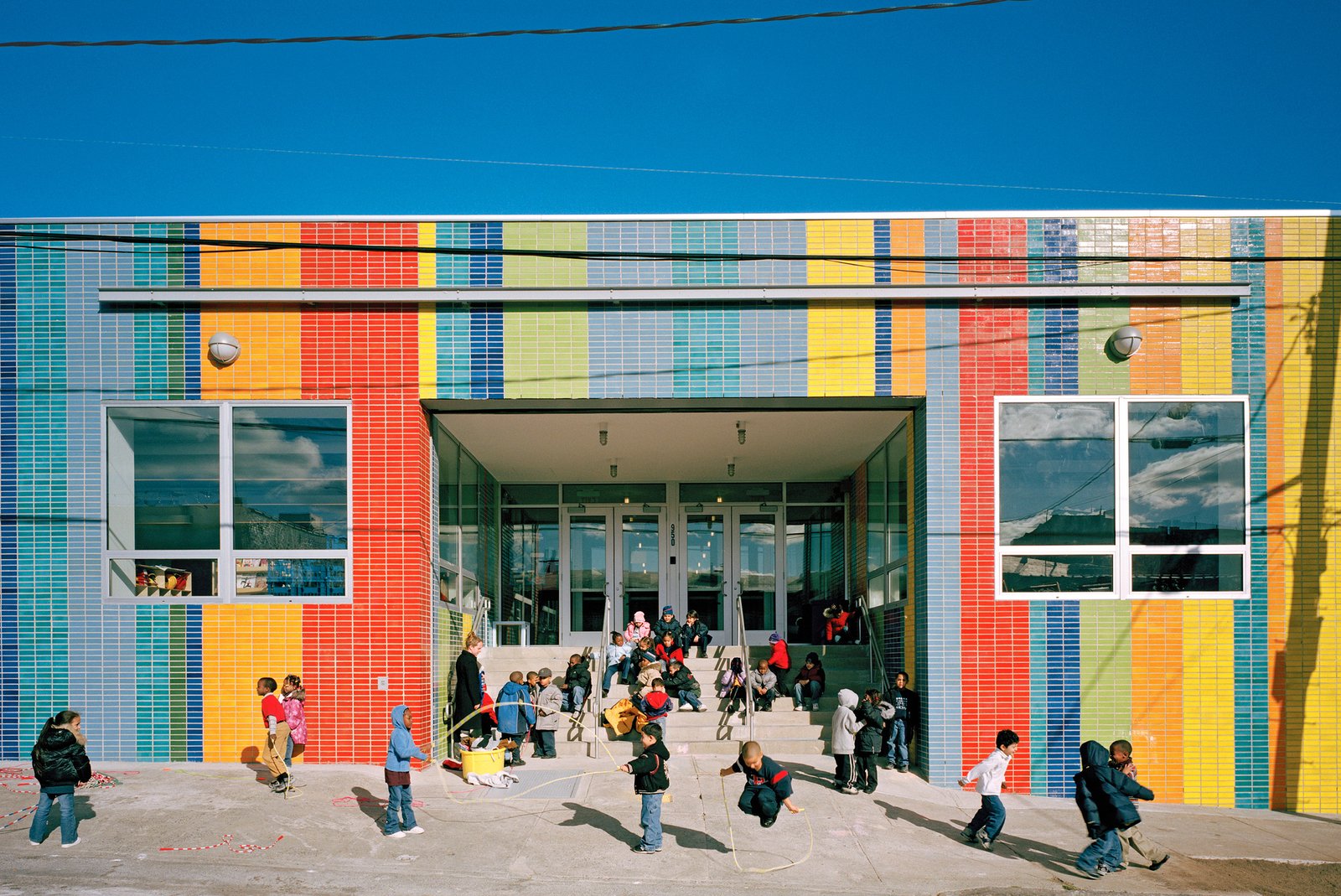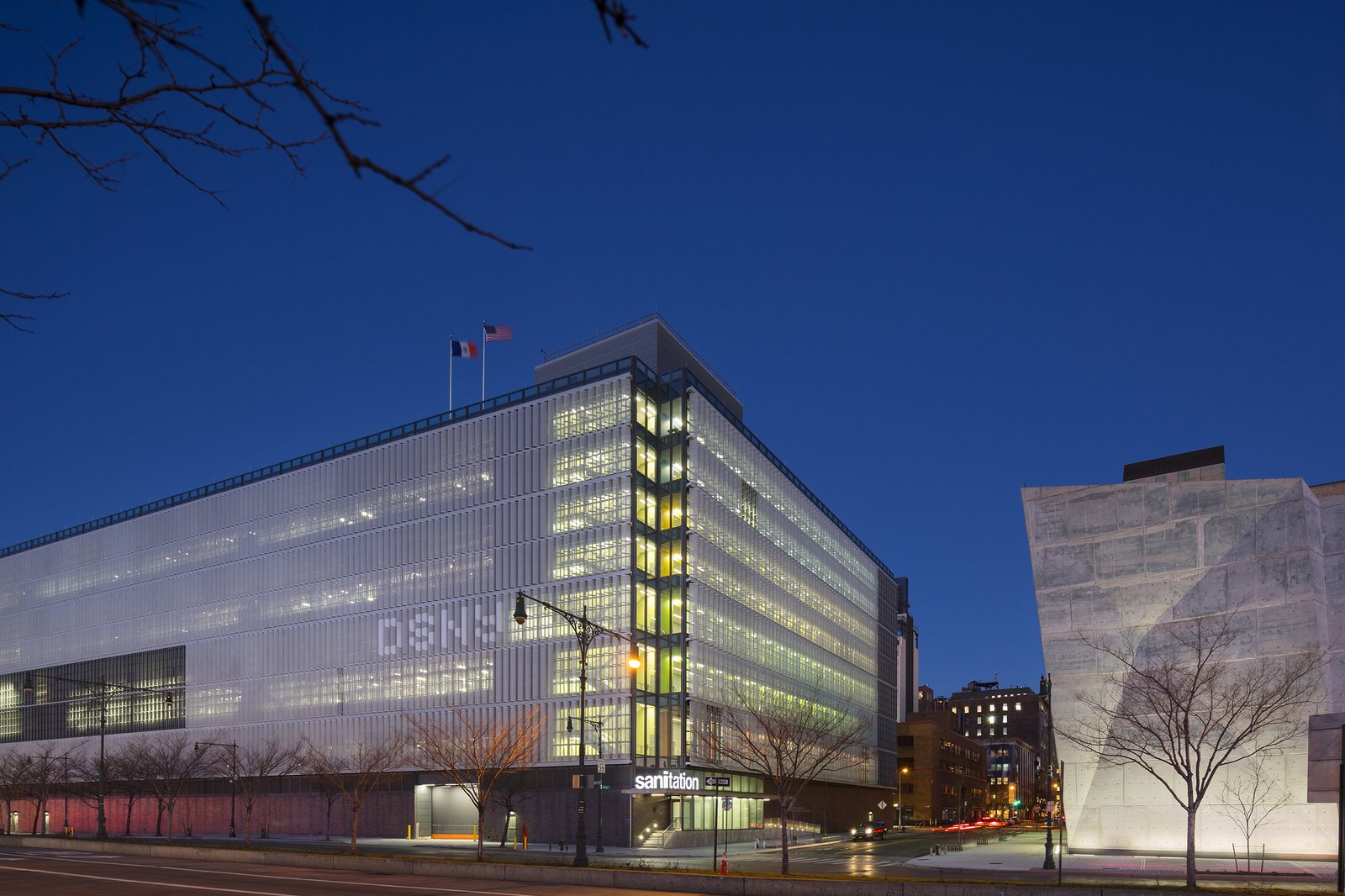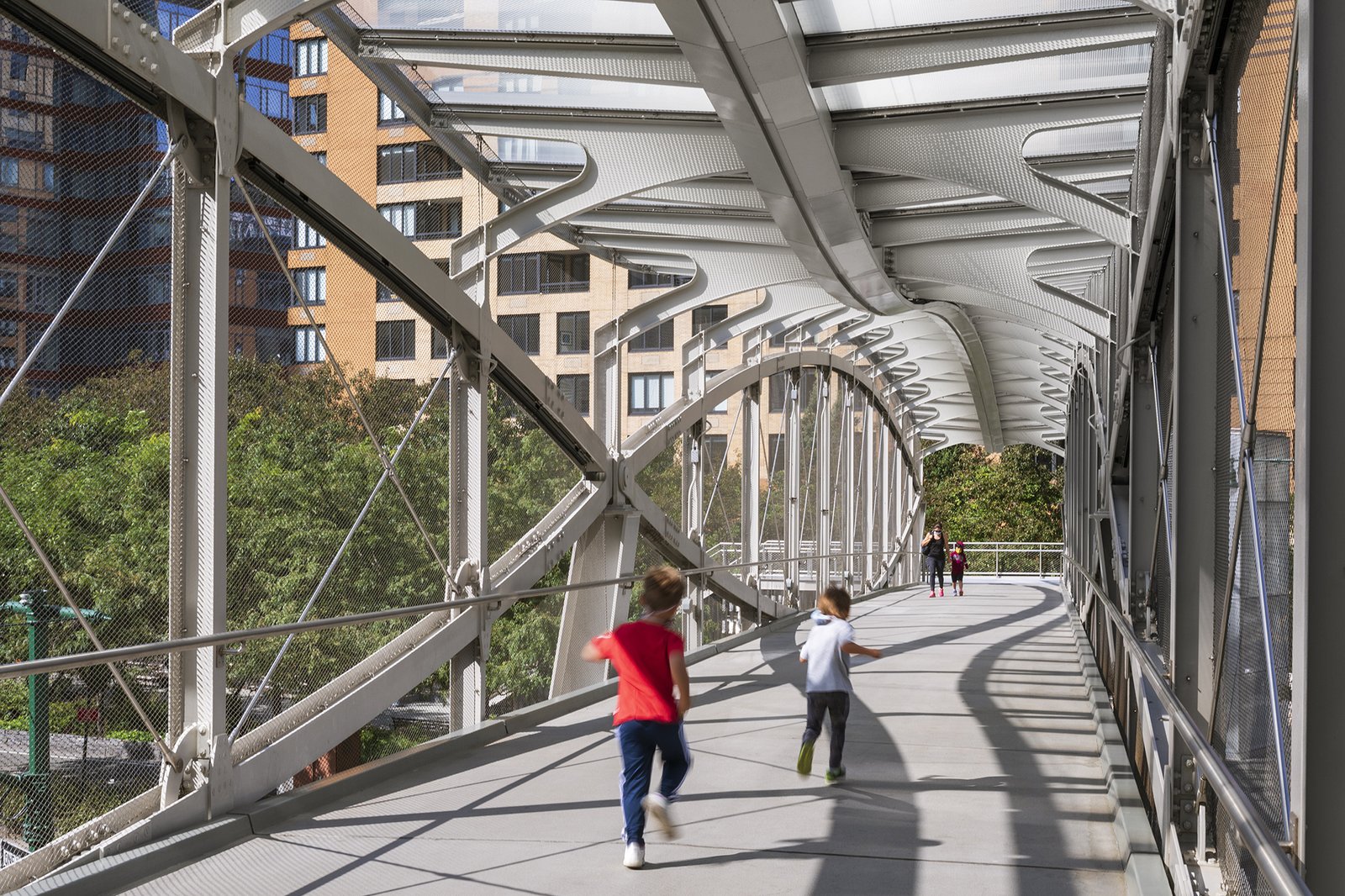Being in dialogue with context doesn’t always mean a design will blend in. Sometimes, it’s about creating a moment of joy—an unexpected twist in the urban fabric that delights and invites.
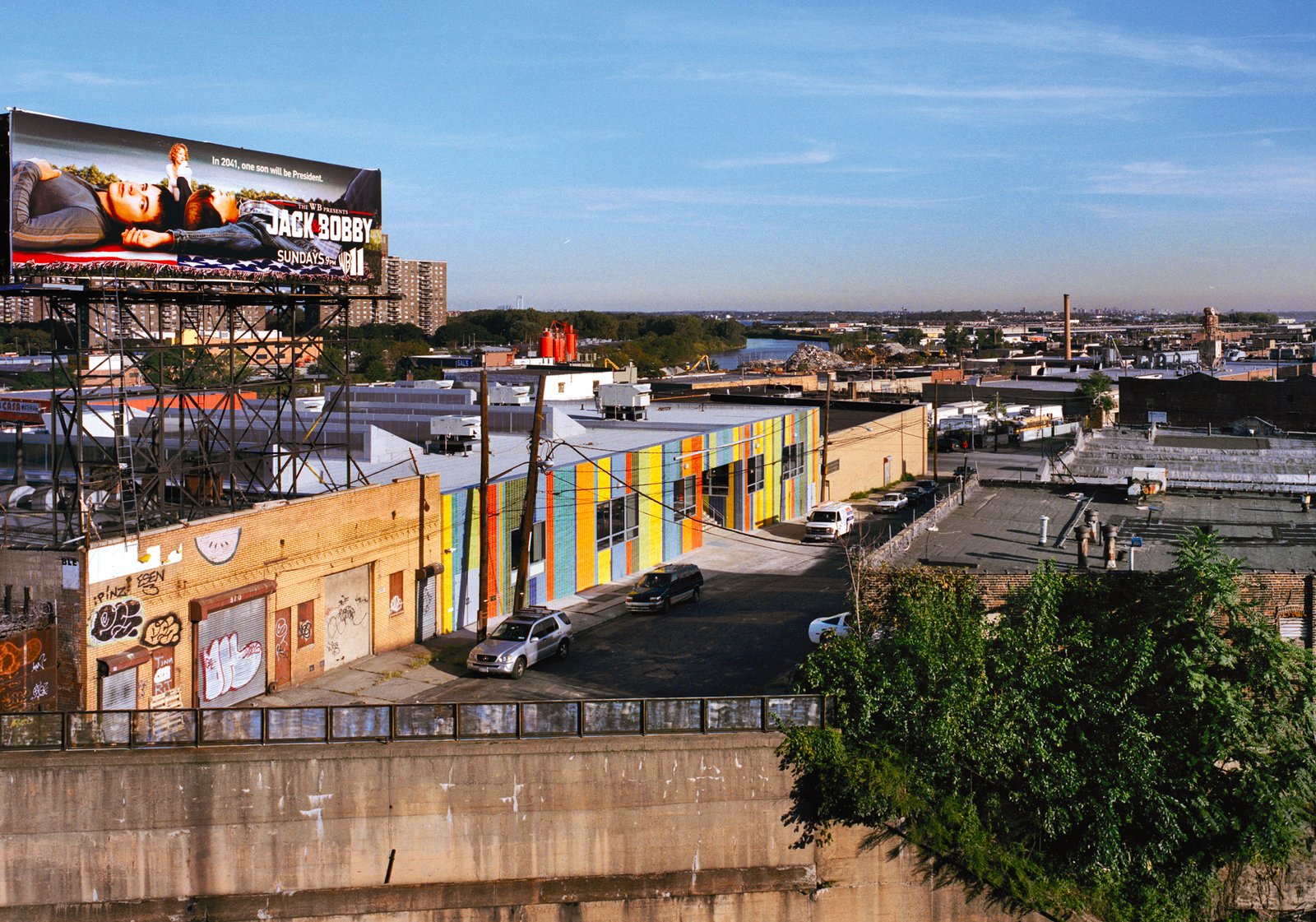
The Bronx Charter School for the Arts features a vibrant façade of glazed brick, with expansive windows framing the creativity within—dance, art, and life spilling onto the street.
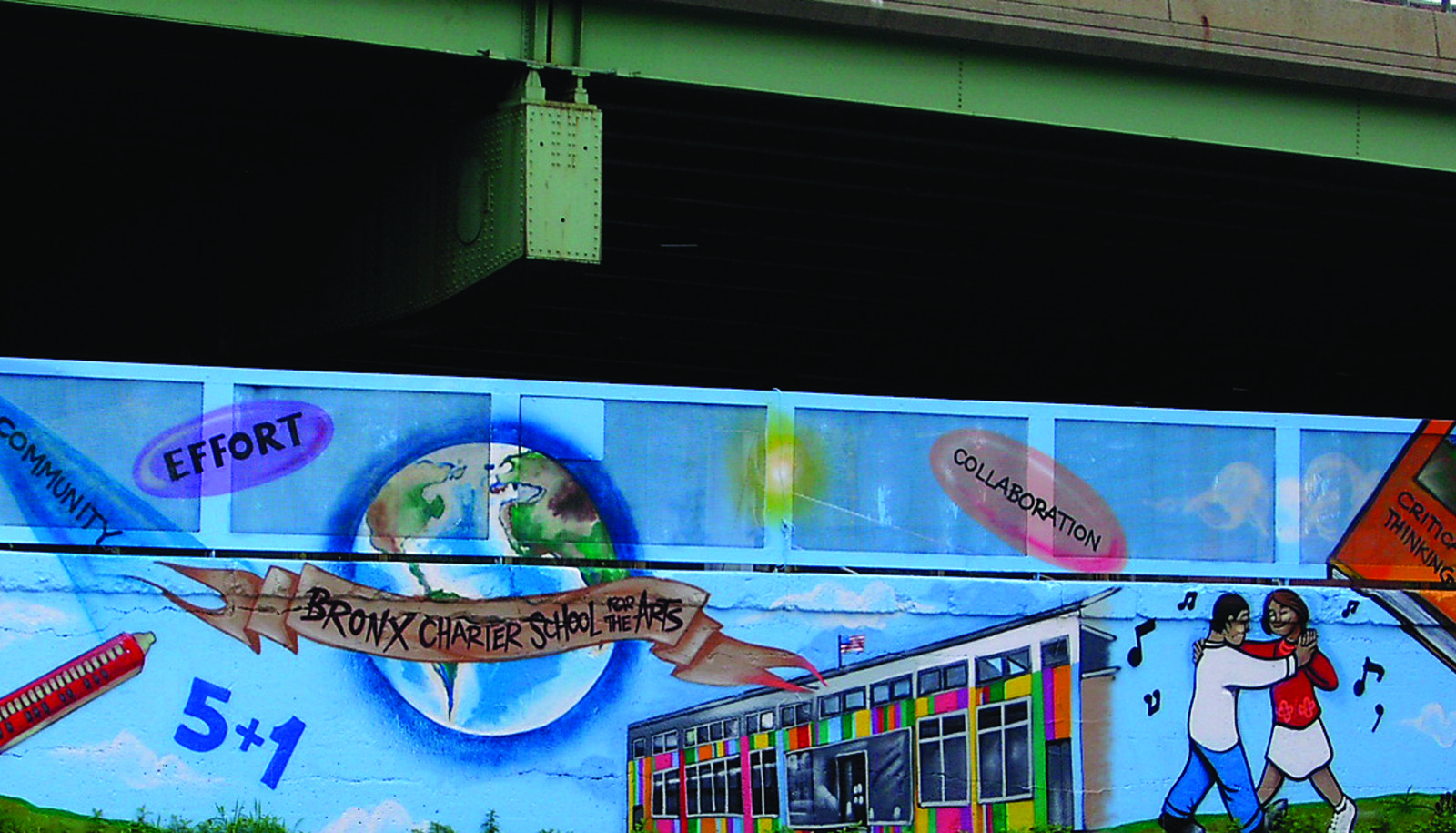
A student created mural stands proudly as a testament to collective effort and underscores the transformative power of arts-based education and community engagement in shaping the next generation.
“In an industrial area cluttered with warehouses, auto-repair shops, and food-distribution centers, the Bronx Charter School for the Arts stands out like a diamond in a rough neighborhood.
”— Evantheia Schibsted, Edutopia.org
Whether through color, materiality, or form, we look for opportunities to add joy and spontaneity to cities.

DSNY Manhattan District 1/2/5 Garage peeking out between surrounding buildings, seen from Vandam Street.
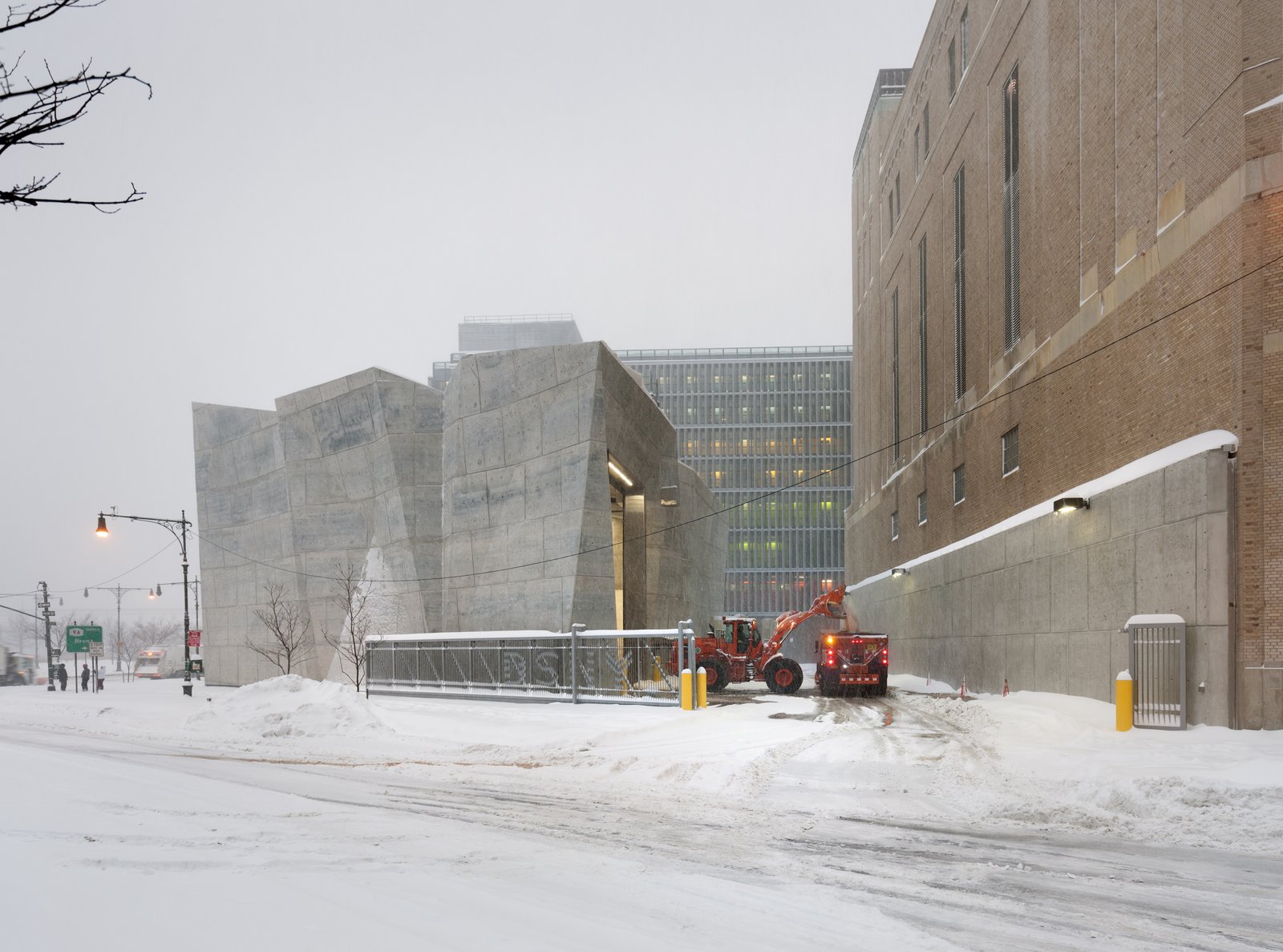
The Salt Shed in action on a snowy day.

Our buildings often find second lives in ways we couldn’t predict. The Salt Shed, for instance, has seen weddings and fashion shows.
In addition to providing a delightful break in the urban fabric, these buildings become a destination or a landmark.
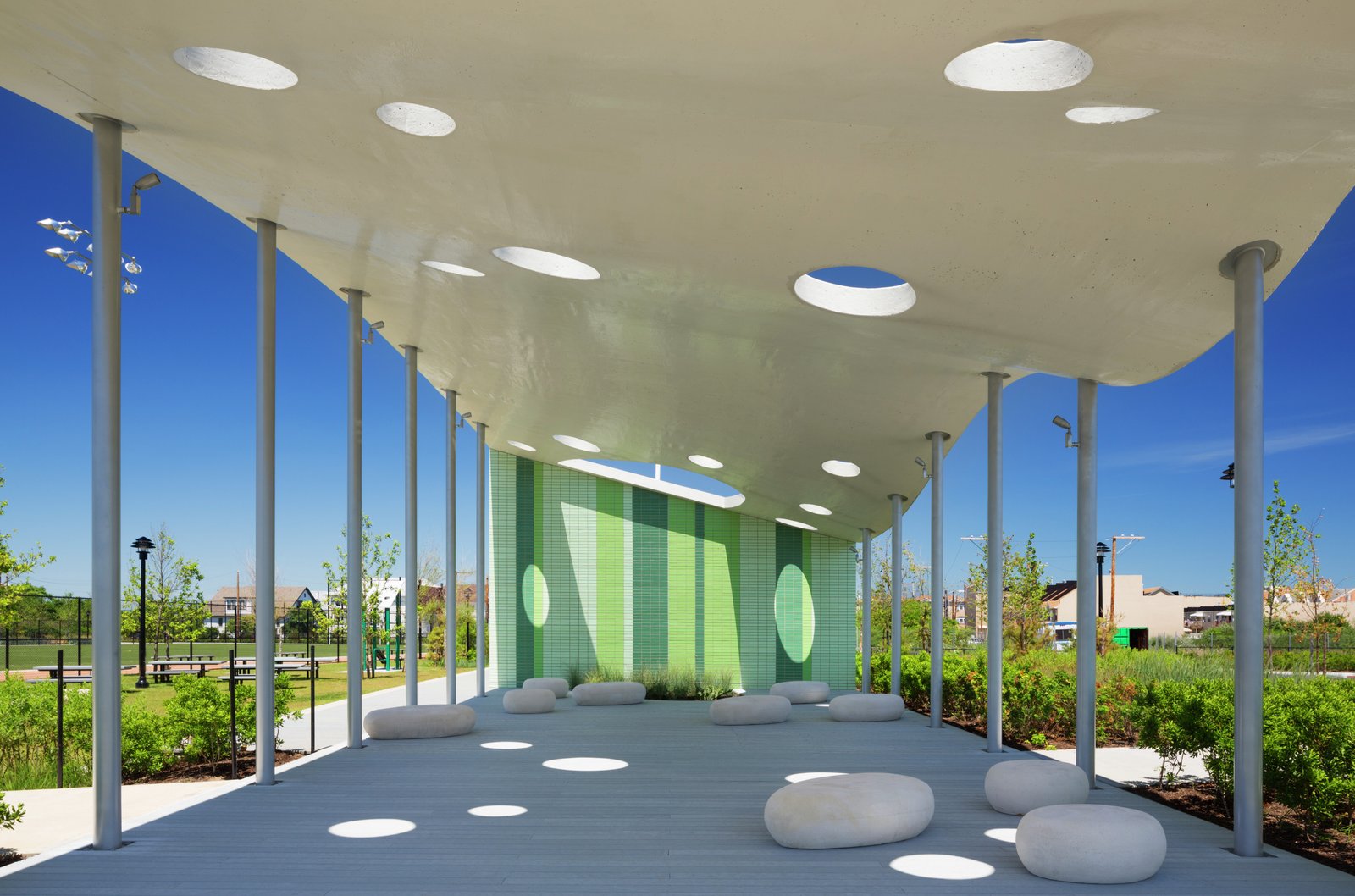
Our master plan for Far Rockaway Park included three unique structures housing new beach amenities. Located along primary paths that link the neighborhood to the boardwalk, each structure is situated to interact effectively with the landscape.

Inspired by imagery of beach-going New Yorkers enjoying the Rockaways, an engaging vocabulary of forms was invented to be reminiscent of parasols, gull wings and fabric flapping in the wind to give a strong identity to these gathering places.
Turning what could have been simple infrastructure into an elevated experience with views of the surrounding neighborhood, the Robert R. Douglass Bridge shows how design can soften a city’s edges.
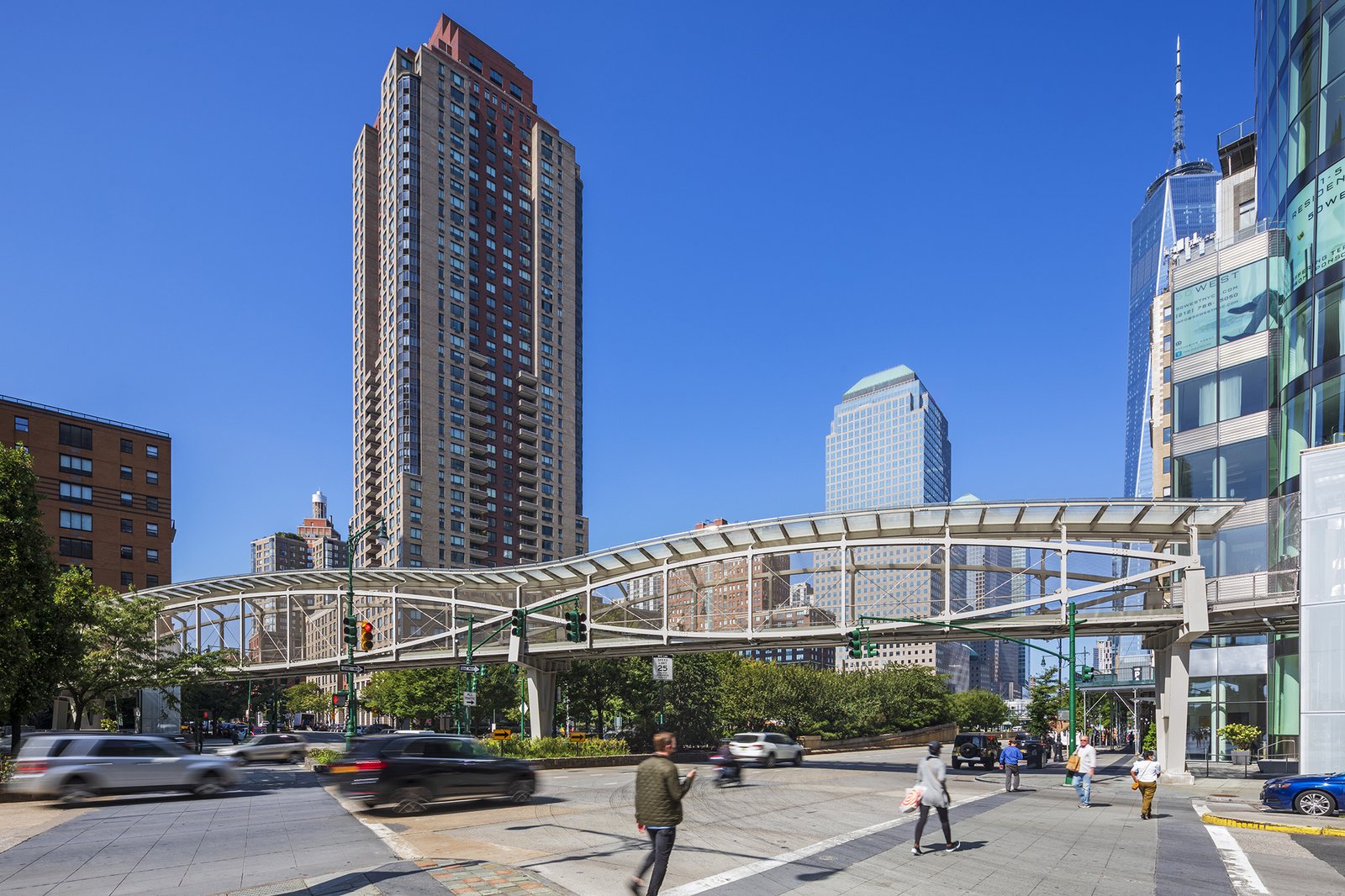
Its organic form, distinguished by a trellis-like truss, contrasts with the stark urban landscape.
